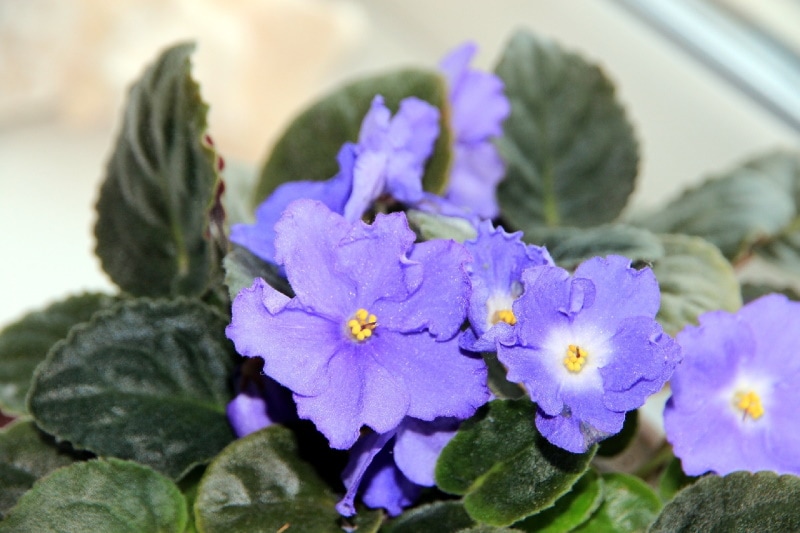How To Make Potting Soil for African Violets Everything You Need to Know!
-
Pete Ortiz
- Last updated:

Gardening is a rewarding and enjoyable hobby, and an excellent way to bring a touch of nature into your home. African violets are among the most popular houseplants, and they can be kept healthy and vibrant with the right care.
One of the most important aspects of caring for African violets is providing them with the right potting soil. If you’re looking for a more customized option, why not make your own soil? Crafting your own potting soil for African violets is easy and cost-effective. In this guide, we’ll show you how with a few simple steps and some basic ingredients, you can craft the perfect soil for your African violets and ensure they stay healthy and bloom for years to come.
Steps to Crafting Your Own Potting Soil
Crafting your own potting soil for African violets gives you full control over its ingredients. Depending on your plant’s needs, you can customize the soil recipe. This allows you to add in any nutrients or additives that your plants require, such as extra potassium to promote strong root growth and flowering. You can also remove any unnecessary ingredients, such as those that are harmful to your plants.
Another benefit of crafting your own soil is that you can save money by making enough for several plants at once. If you are purchasing premade potting soil, there is no way to know exactly what is in it, or how it was made. There could be harmful chemicals or additives in the soil that could negatively affect your plants.
You may also be exposed to these chemicals when handling the soil. When you make your own potting soil, you know exactly what’s in it and can avoid any ingredients that could be harmful to your plants.
Let’s look at how to do it.
1. Select the Right Ingredients
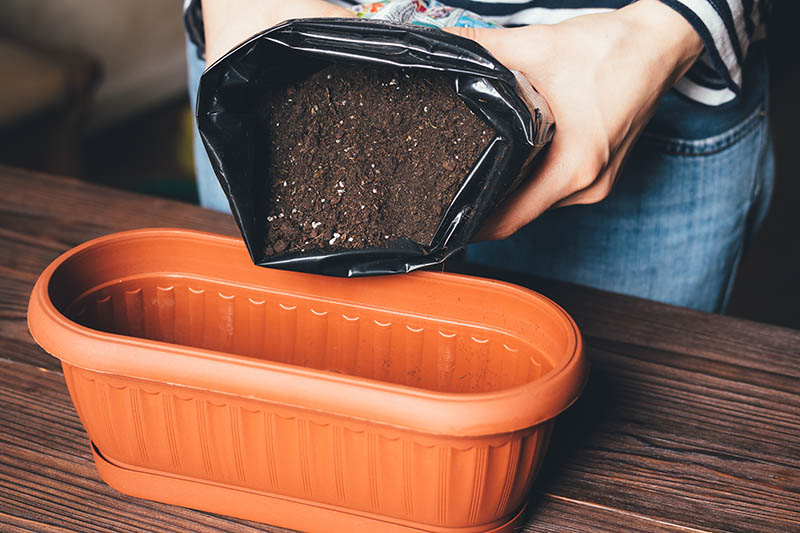
The first step to making homemade potting soil is to select the right ingredients. There are a variety of different ingredients you can use, so it’s important to select ingredients that are appropriate for African violets.
Here are some of the most popular ingredients used in potting soil for African violets.
Fibers: Fibrous ingredients, such as peat or coir, provide excellent aeration and drainage, which are crucial for keeping African violets healthy.
Organic Matter: Organic materials such as coconut husk, bark, or pine shavings are excellent for adding nutrients and are a popular option for potting soil for African violets.
Humus: Humus, an organic material that is created when organic matter breaks down, is a great option for potting soil for African violets. It’s believed that it makes soil fertile and helps to prevent diseases.
2. Prepare the Soil
Once you’ve selected the right ingredients, just combine them together to create the perfect soil for your violets. When you’re mixing the ingredients together, make sure that they’re thoroughly mixed.
Next, place them in a container to let them sit. The length of time that you let the soil sit before using it will depend on the ingredients that you’re using.
If you’re using peat, coir, or any other fibrous ingredients, you’ll want to let the soil sit for at least 2 weeks before using it. This will allow enough time for the fibrous materials to break down and become fully integrated into the soil. If you’re using organic matter, you’ll want to let the soil sit for at least a month.
3. Add the Right Amount of Fertilizer
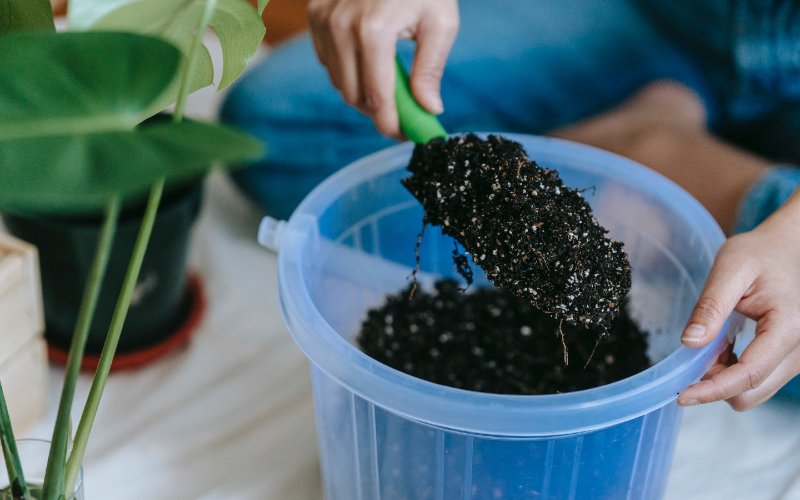
And on to the fertilizer. First, add the right amount of fertilizer to your soil (you can check this by following its instructions), depending on the ingredients that you used. Using ingredients such as pine shavings or bark, you’ll want to use a slow-release fertilizer, such as 10-10-10, every 2–3 months. These fertilizers provide a slow release of nutrients over time, which is perfect for African violets.
Using ingredients such as peat or coir, you won’t need to add any fertilizer to your soil since they already contain plenty of nutrients. However, you can add a slow-release fertilizer such as the same 10-10-10 formula to boost the nutrients.
If you want to further customize the soil by adding nutrients that are specific to African violets, you can purchase a premade African violet fertilizer (there are a few on Amazon). You can also add other nutrients to the soil, such as potassium for flowering.
4. Combine the Ingredients
Once your soil has had time to sit and all of the ingredients are fully integrated into the soil, it’s time to combine them all together. Start by sifting your soil to remove any lumps or clumps that may have formed while the ingredients were settling. Next, add your peat, coir, or other fibrous ingredients first, and then add your organic matter.
Once you’ve layered the ingredients, use your hands to mix them together thoroughly. Keep in mind that your potting soil will need to be replaced periodically, as it’ll eventually break down. How often you need to replace your potting soil will really just depend on the ingredients that you used to create it.
5. Add Finishing Touches

Now that you’ve crafted your potting soil, you need to properly care for it so that it stays fresh. To keep your potting soil healthy, you’ll want to water it regularly, keeping the soil moist but not soggy. Water your potting soil using either a watering can or a watering system. If you’re using a watering can, you’ll want to water your soil until it’s thoroughly moist, but not soggy.
If you’re using a watering system, you’ll want to use a watering schedule that works best for your plants (you may need to experiment a bit initially) but watering every 2–3 days is a good starting point. If you’re crafting your own potting soil, you may need to water it more frequently than commercially available potting soils, which are often pre-moistened. The best guide is to simply feel the topsoil, if it’s dry and crumbly, give them a watering session. If it’s moist, check it in a day or two.
Tips for Maintaining Your Potting Soil
There are a few steps you can take to make sure your potting soil stays fresh and healthy. Here are some tips for maintaining your potting soil for African violets:
Store Your Soil in a Container
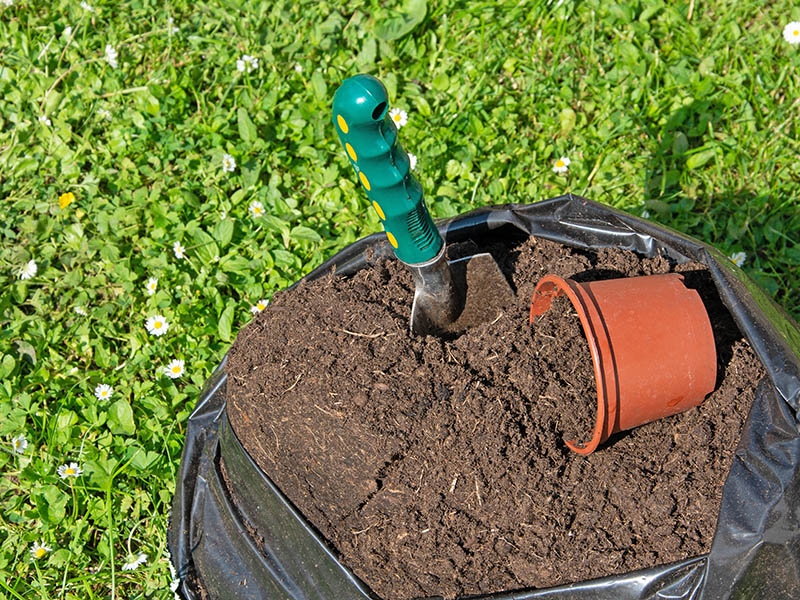
Once you’ve finished crafting your soil, you’ll want to store it in a container to keep it fresh. A plastic or glass container is best since it will protect your soil from pests and rot.
It’s important to inspect your soil every month to make sure it’s staying fresh. Look for any signs of mold or rot, including a bad smell or dark spots. If you notice any of these signs, your soil is rotting and needs to be replaced immediately.
Use a Moisture Meter
A moisture meter is a great tool to help you maintain the right amount of moisture in your soil. You can buy one of these for about $10–$15.
Don’t Overwater
It can be tempting to overwater your soil, especially if you’re letting it go longer between waterings. Make sure that you’re only adding enough water to keep the soil moist but not soggy (this can lead to fungal issues). Again, it may take a bit of trial and error to determine your watering schedule.
Frequently Asked Questions
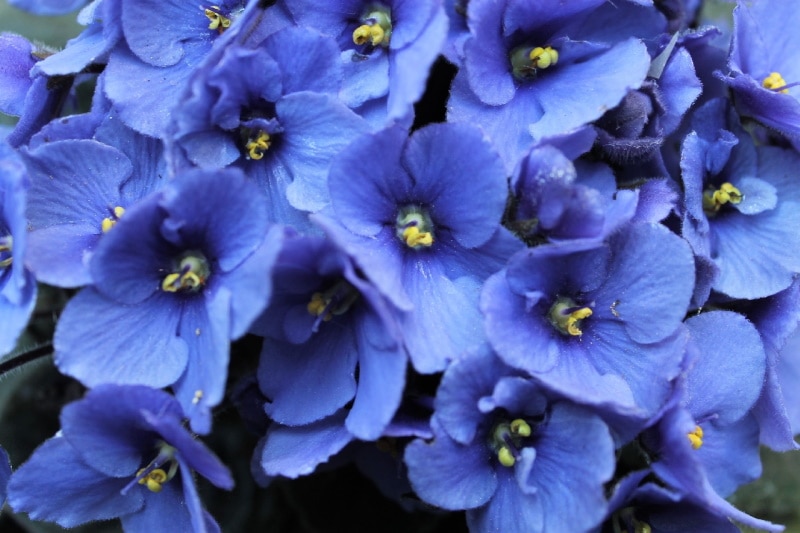
What are African Violets?
African violets are a flowering plant that is a member of the genus Saintpaulia. There are hundreds of varieties of African violets, each with a unique shape, size, and color. They’ve been cultivated for both their decorative and medicinal properties for thousands of years and are now widely cultivated. African violets are native to Africa, which is the reason for their name. African violets are fairly easy to care for, making them popular houseplants.
What type of soil should I use for African violets?
You can create your own, use one that’s been specially formulated for African violets, or simply use a 10-10-10 (N-P-K) formula. You can usually find soil specifically made for African violets at your local gardening store or online. African violet soil should be a light mix with lots of organic ingredients and very little fertilizer.
How much water should I give my African Violets?
Like many houseplants, African violets need consistent but not excessive water. Overwatering can cause root rot and kill your plant, so a bit of initial experimentation is usually needed to determine how much they need on a weekly basis. Essentially, you want to water your African violets when the soil feels dry to the touch, but before it’s so dry that it has become brittle and crumbles in your hand. You can also use a moisture meter to get an accurate reading. When watering, you only want to give your plants enough water to moisten the soil, but not so much that it sits in a puddle at the bottom of the pot.
What type of sunlight light do African Violets need?
African violets prefer partial sun to full sun but can also be grown indoors under artificial light. A good rule of thumb for African violets growing indoors is to place them 2 to 3 feet away from a bright, indirect light source. If you grow them under artificial lighting, it’s best to keep the lights on for 14 to 16 hours a day. Make sure to put your African violets somewhere they won’t be exposed to direct light from a window or other light source. Exposing your African violets to direct sunlight can cause them to wilt, turn brown, and even die.
How often should I fertilize my African Violets?
When you’re first starting out growing African violets, it is best to use a fertilizer with a low nitrogen content. You want to avoid feeding your African violets too much nitrogen, which can cause them to grow too quickly and take on a leggy appearance. African violets prefer to be fertilized every 2 weeks with a low-nitrogen fertilizer, but you should consult your plant’s instructions to see what it prefers. If your African violets have been growing for a long time and have become leggy, you may want to fertilize them more often. Overfeeding your violets is better than underfeeding them, so if you are unsure, you can always give them a little boost.
What pests should I watch out for?
The best way to keep pests away from your African violets is to keep the area where you keep your violets clean. If a pest infestation does occur, there are many ways you can treat it. If you see little white bugs, your violets may have spider mites. This is common in African violets and can be treated with insecticidal soap or neem oil. If you notice any sort of white webbing, you may have a spider mite infestation, which can also be treated the same way.
What is the best temperature for my African Violets?
African violets prefer a warm environment and will do well in temperatures between 60 and 80 degrees Fahrenheit. Avoid keeping your African violets in a drafty environment that is too cold, as this can cause them to wilt and die. If your African violets are in a room with temperatures that are too low, you can place them near a warm furnace or in a sunny window to keep them warm enough.
Conclusion
When crafting your own potting soil for your African violets, be sure to first have some idea of what you need to put in the mix. Once you make a list of your ingredients come is really just a matter of mixing them together and adding your plants or seeds.
Featured Image Credit: Anita Božić, Pixabay
Contents


